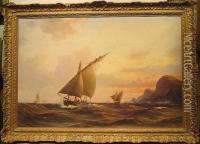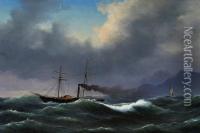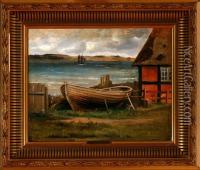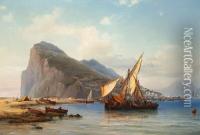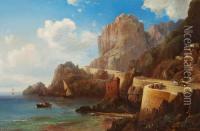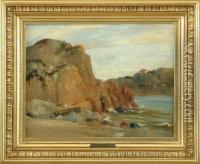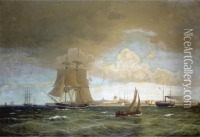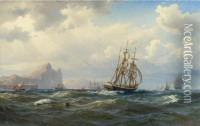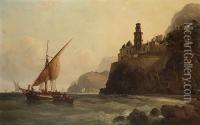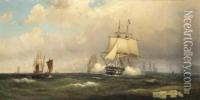Vilhelm Melbye Paintings
Vilhelm Melbye, also known as Wilhelm Melbye, was a Danish marine artist born on May 14, 1824, in Elsinore, Denmark. He was the younger brother of the landscape painter Anton Melbye and the sculptor Fritz Melbye, both of whom were also accomplished artists in their own right. Vilhelm was initially influenced by his brother Anton's work and began his artistic career under his guidance.
Melbye's passion for the sea and ships was evident in his work. He specialized in maritime scenes, capturing the vastness of the oceans and the majesty of sailing vessels with a remarkable attention to detail. His paintings often depicted ships in calm seas under bright skies, as well as the more dramatic moments of storms and shipwrecks. These works were characterized by their technical precision and a romanticized yet realistic portrayal of the marine environment.
In 1847, Melbye set off on an extensive journey that would take him to the Mediterranean, where he found substantial inspiration for his art. He settled in Hamburg in 1849 and later moved to Paris in 1858. During his time in Paris, he came into contact with the Barbizon school, a movement that focused on realism in landscape painting, which influenced his approach to depicting natural light and atmosphere in his seascapes.
Throughout his career, Vilhelm Melbye exhibited his works extensively. He participated in shows at the Charlottenborg Palace in Copenhagen and was also represented in exhibitions in Paris and London. His international presence helped him to gain recognition outside of Denmark, and he became known for his marine art across Europe.
Despite the popularity of his work during his lifetime, Melbye's name is not as prominent in the history of art as some of his contemporaries. Nevertheless, his contributions to the genre of marine painting are noteworthy, and his works are still appreciated by collectors and enthusiasts of nautical art.
Vilhelm Melbye passed away on October 13, 1882, in Roskilde, Denmark. Today, his paintings can be found in various art museums and private collections, serving as a testament to his skill in capturing the beauty and power of the sea.
